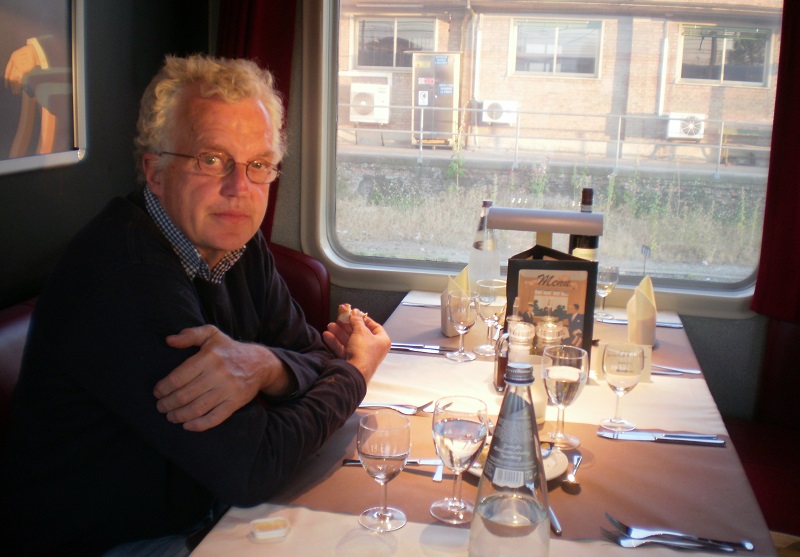Martyn Pring, Luxury Railway Travel, a social and business history, Pen & Sword, £35
There may never have been a murder on the real Orient Express but otherwise Agatha Christie’s depiction of luxury train travel was pretty accurate. Cordon Bleu cooking, accompanied by fine vintage wines and served by immaculately turned-out waiters, was offered to the first class passengers, who often included members of the aristocracy and senior diplomats.
The Orient Express was inaugurated in 1883, just as the railways both in the UK and elsewhere were starting to realise that their more affluent customers were not only a key source of revenue but also deserved special attention. As Martyn Pring puts it, ‘Higher society was on the move, requiring more opulent and spacious modes of transport’.
The railway companies had, in fact, been rather slow to improve their services to meet the needs of this growing group of travellers. Initially, the best way for the rich to ensure a ride in the manner to which they were accustomed was simply to hitch their own carriages to the back of an existing rail service. Jay Gould, for example, who at one point owned about a seventh of the American railways, had four coaches, one of which housed a special cow to produce fresh milk with just the right proportion of butterfat.
Better still was to have your own train. Mostly this was the prerogative of royalty, exemplified by Queen Victoria, who was a frequent if somewhat nervous traveller who did not allow her train to travel at more than 35mph. The rival companies operating on the East and West Coast Mainlines soon each provided her with trains, one of which was 14 carriages long. Not to be outdone, the Great Western Railway unveiled its Diamond Royal Jubilee Train in 1897.
Even better was to have your own station, like the Duke of Sutherland, whose ‘Dunrobin’ – he was probably oblivious to the pun – had, according to the Tatler, ‘waiting-room, booking office and other rooms [which] all comprised a charming picturesque building built of the best Scots fir’. Trains would only stop when the Duke or members of his household needed to use them.
For the ordinary rich, the early days of train travel were not particularly comfortable. Cramped compartments with no toilet facilities – various devices were offered for both male and female relief – were the norm until the 1870s.
Then matters improved radically, not least because the spread of capitalism had increased the potential market for people seeking higher standards of comfort. By the Edwardian age, the availability of gas on trains meant that meals could be prepared on board and there was ‘a sort of arms race in railway catering’ with companies on long-distance routes vying with each other to provide the best meals.
After the First World War, when the Big Four were created through merging more than 100 companies that had existed before the conflict, there was what Pring calls a Golden Age of luxury travel. Even the Southern, which covered the smallest geographical area, launched a series of premium services, notably the Brighton Belle and the Golden Arrow service through to Paris (on which I travelled with my mother in the early 1960s and enjoyed the delicious cream tea served by stewards happy to indulge a rather spoilt ten-year-old).
Pring is excellent on the social context of the railways, but while he does venture abroad at times, citing the most famous foreign examples, there are some glaring omissions. India, for example, had some of the greatest luxurious trains under the Raj, great expresses which connected with incoming ships to speed the rulers onto their destinations and offered lavish meals that included everything from roast sirloin and fish in butter sauce through to strawberries and cream and bread pudding. The Transsiberian, too, offered luxury carriages with whole libraries in various languages for the long journey across the world’s biggest nation.
Thankfully, Pring ends on a positive note. The apogee of luxury train travel may well have been in the interwar period but there are signs of a revival, though largely offered by private companies running special ‘rail cruises’ along the Transsiberian or parts of the now sadly defunct Orient Express route at prices that exceed $1,000 per day. These trains tend to use old rolling stock that has been refurbished, but in Japan, according to Pring, several of its main rail companies are branching out by building new trains aimed at the luxury market, such as the Kyushu Seven Stars, and the Mikuzake Twilight Express, offering two- or four-day trips far away from the hurly burly of the country’s more famous bullet trains on the Shinkansen.
